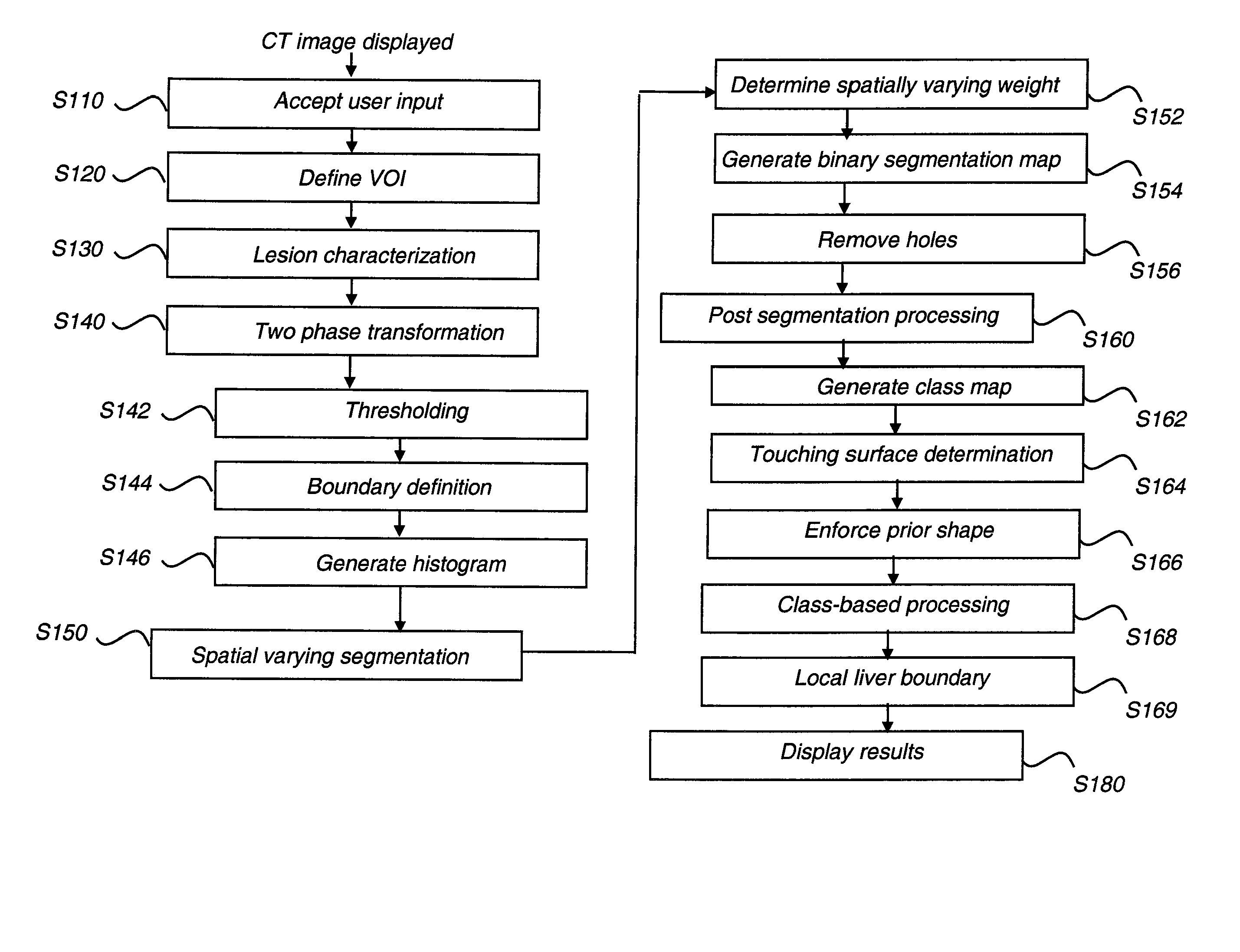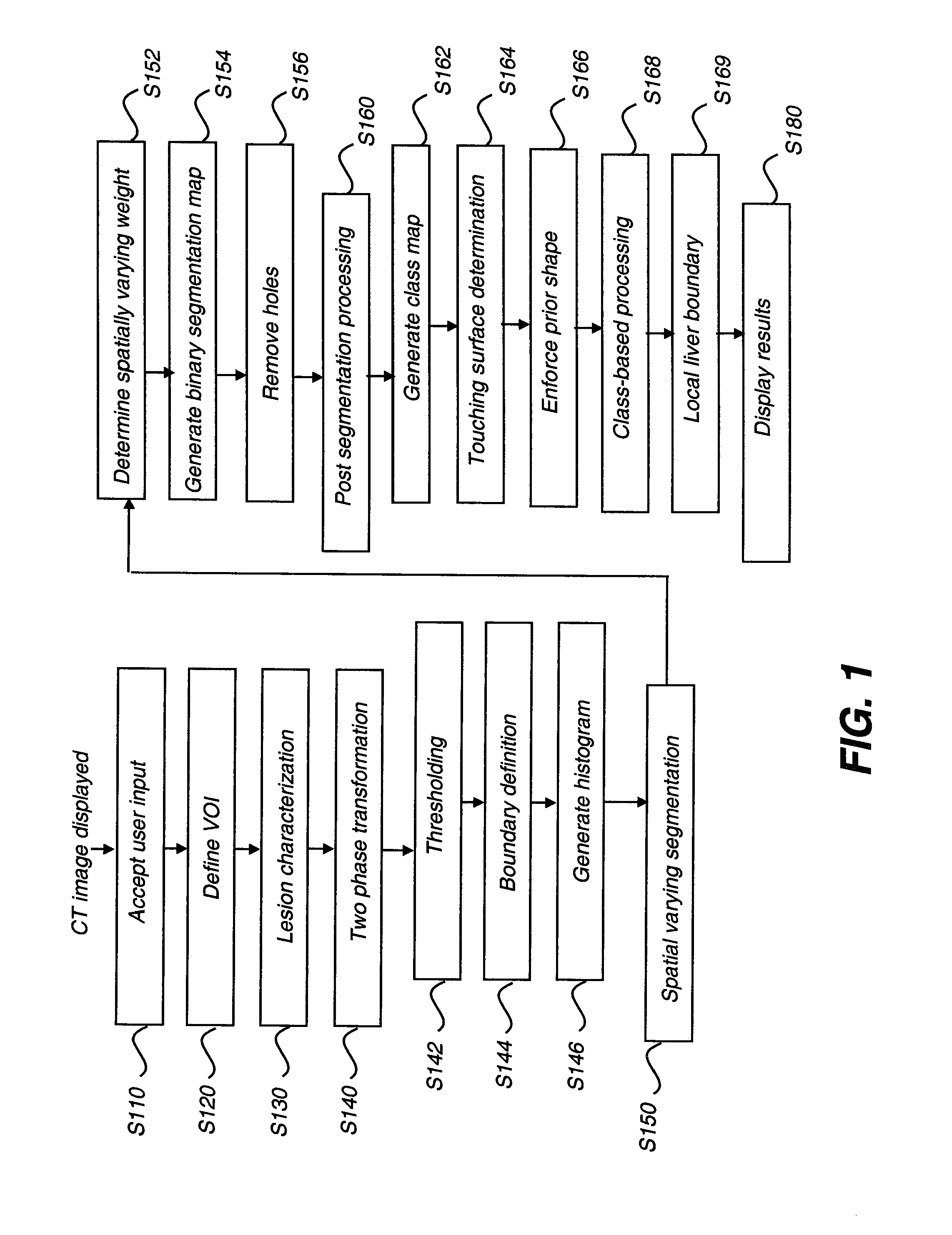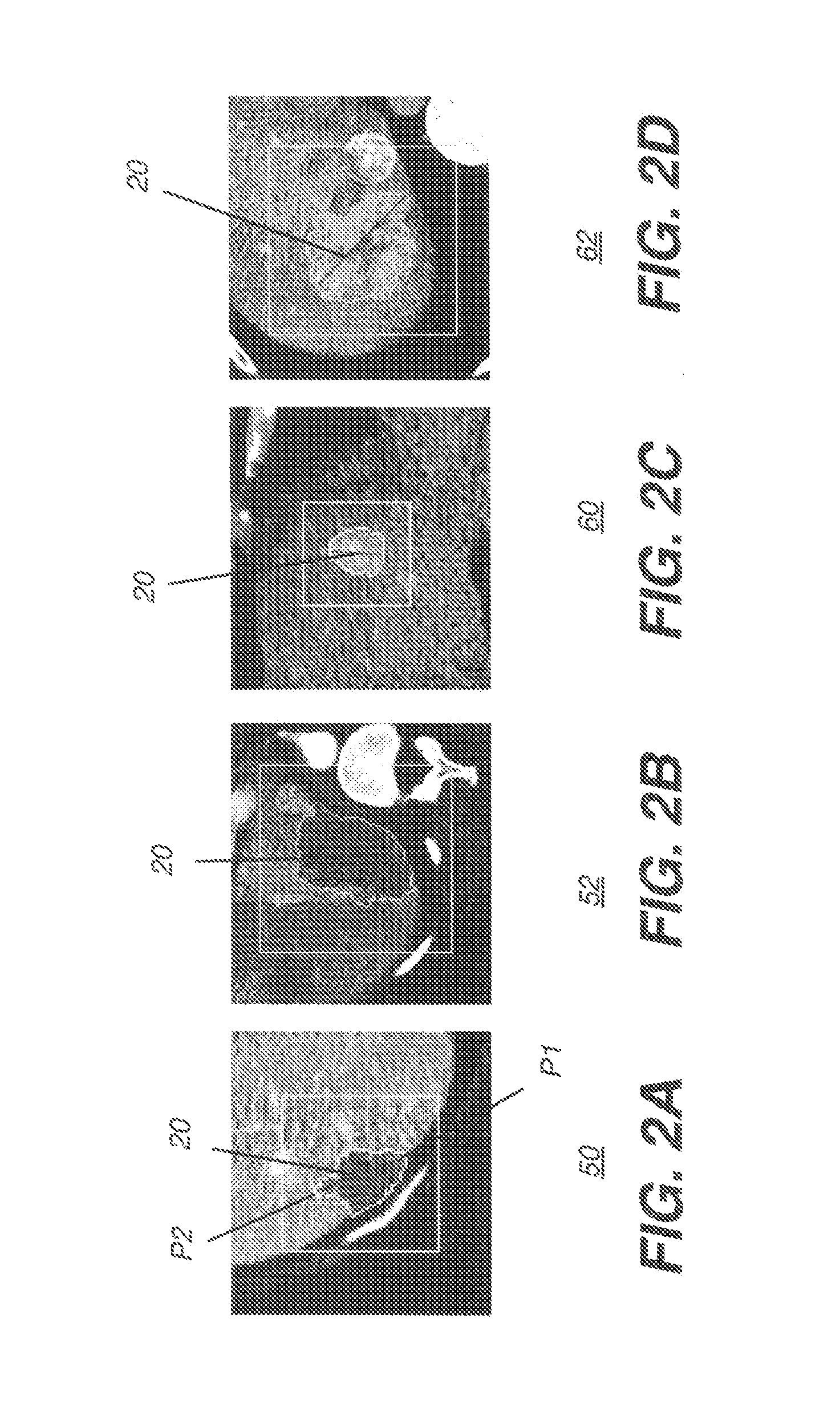Liver lesion segmentation
a liver tumor and segmentation technology, applied in the field of diagnostic imaging, can solve the problems of not being able to accurately track the volume change of irregularly shaped tumors, being unsuitable for the overall workflow requirements, and being tedious and time-consuming, so as to improve the segmentation performance, improve the segmentation effect, and reduce the likelihood of segmentation leakage
- Summary
- Abstract
- Description
- Claims
- Application Information
AI Technical Summary
Benefits of technology
Problems solved by technology
Method used
Image
Examples
Embodiment Construction
[0022]The following is a detailed description of the preferred embodiments of the invention, reference being made to the drawings in which the same reference numerals identify the same elements of structure in each of the several figures.
[0023]In typical applications, a computer or other type of general-purpose or dedicated logic processor is used for obtaining, processing, and storing image data as part of the CT system, along with one or more displays for viewing image results. A computer-accessible memory is also provided, which may be a non-volatile memory storage device used for longer term storage, such as a device using magnetic, optical, or other data storage media. In addition, the computer-accessible memory can comprise an electronic memory such as a random access memory (RAM) that is volatile, used for shorter term storage, such as employed to store a computer program having instructions for controlling one or more computers to practice the method according to the present...
PUM
 Login to View More
Login to View More Abstract
Description
Claims
Application Information
 Login to View More
Login to View More - R&D
- Intellectual Property
- Life Sciences
- Materials
- Tech Scout
- Unparalleled Data Quality
- Higher Quality Content
- 60% Fewer Hallucinations
Browse by: Latest US Patents, China's latest patents, Technical Efficacy Thesaurus, Application Domain, Technology Topic, Popular Technical Reports.
© 2025 PatSnap. All rights reserved.Legal|Privacy policy|Modern Slavery Act Transparency Statement|Sitemap|About US| Contact US: help@patsnap.com



